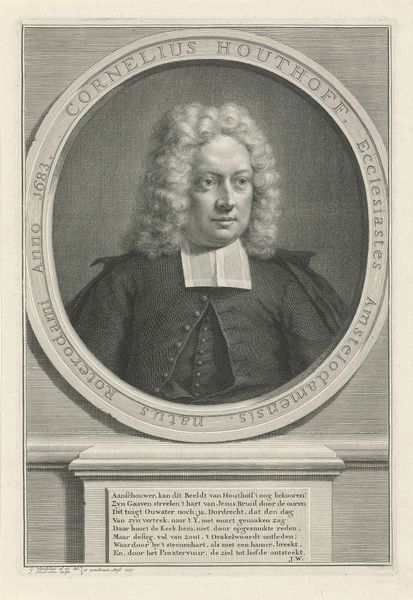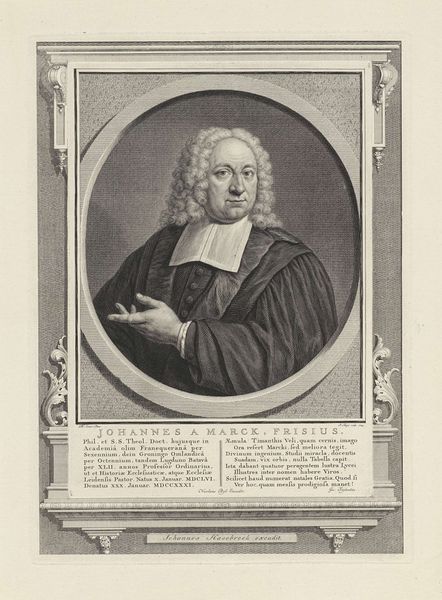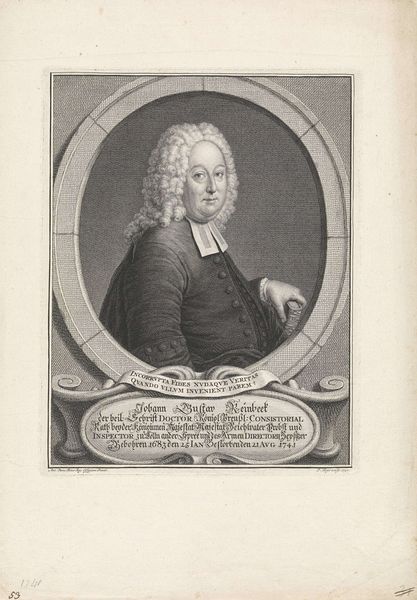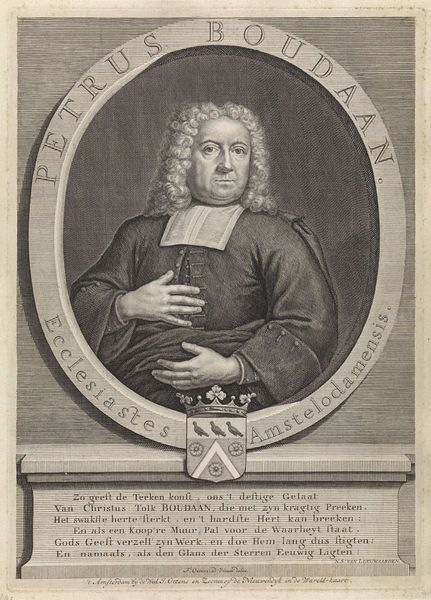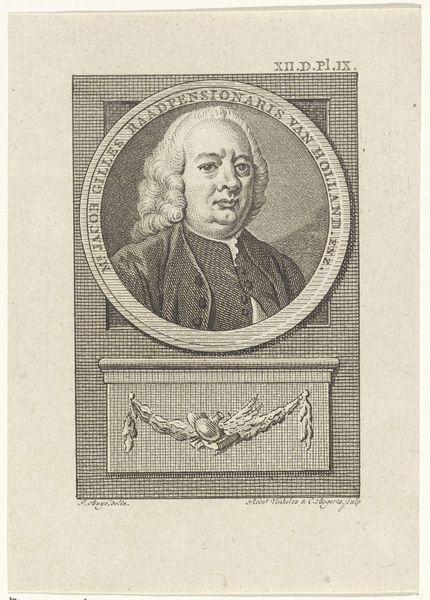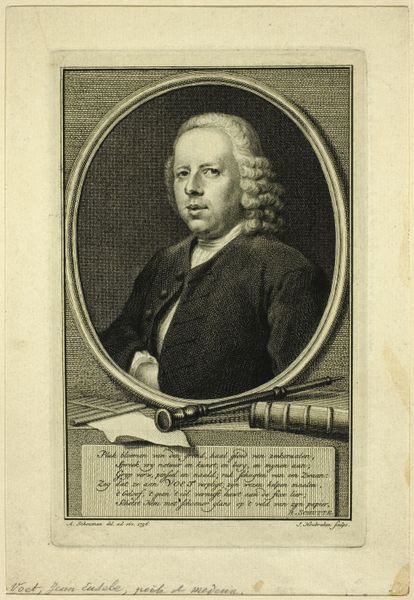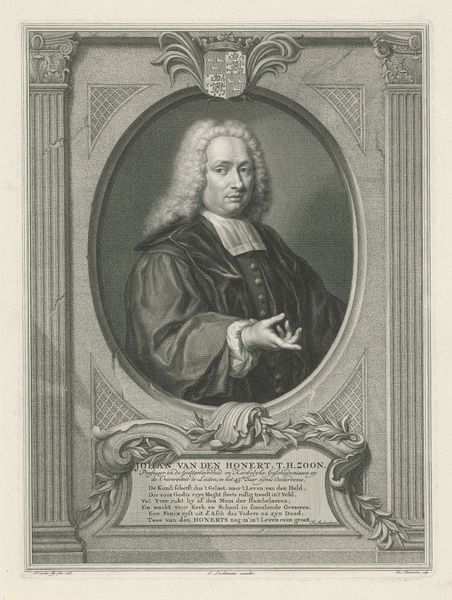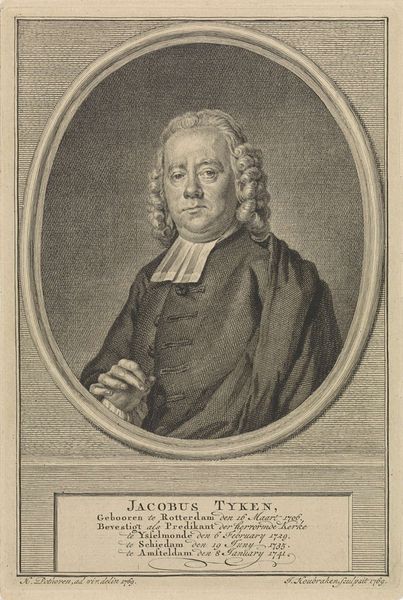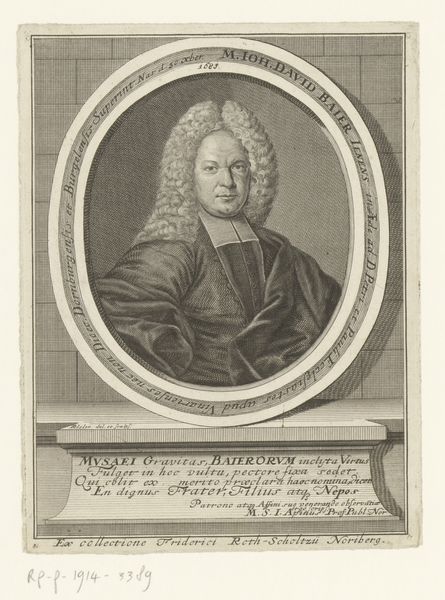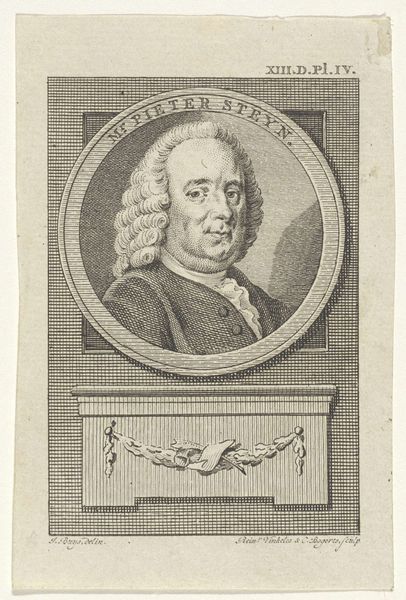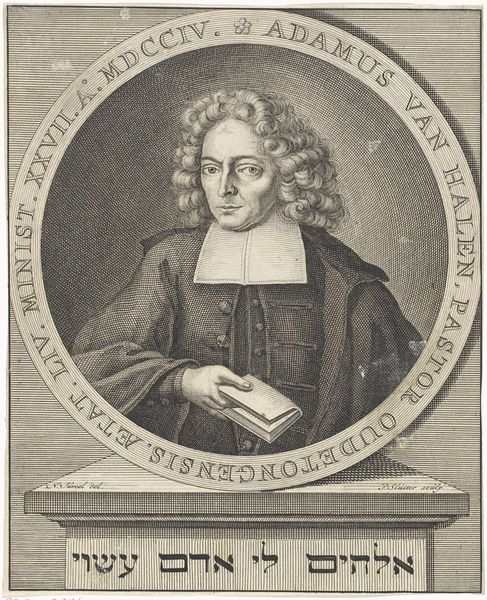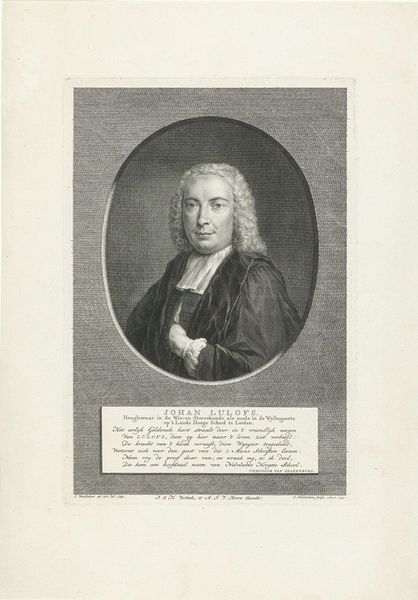
Copyright: CC0 1.0
Curator: This is Jacobus Houbraken's "Cornelius Houthoff," made in 1683. The sitter was a clergyman. Editor: The tight framing and monotone print give it an air of solemnity. What was the printing process like? Curator: It's an engraving, allowing for precise lines and details. Think of the skill involved in rendering Houthoff's wig! Editor: And consider the raw materials, the paper, the ink. These portraits helped construct identity and reinforce social hierarchies. Curator: Precisely. The inscription below further cements Houthoff's legacy within a very specific theological and social framework. It highlights his virtues and role. Editor: It is intriguing how the materiality serves to both immortalize and situate him within his cultural moment. Curator: Yes, art becomes a tool for shaping memory and power. Editor: Indeed.
Comments
No comments
Be the first to comment and join the conversation on the ultimate creative platform.
